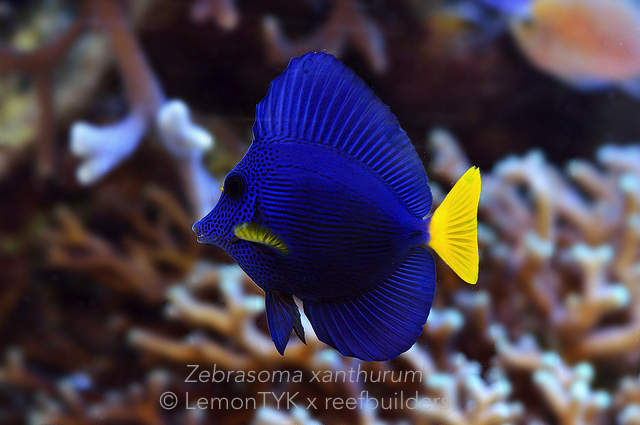It’s been some time since we last featured an Awesome Fish Spotlight, and what better way to continue than with an evergreen aquarium favourite from a well loved genus. Zebrasoma is without a doubt the blue eyed boy of the acanthurids, and with a half dozen or so species to choose from, Z. xanthurum ranks one of the highest in terms of popularity. Why would it not? There’s a certain element of mystic beauty that shrouds the Purple Tang, making this a more interesting choice than your average Hawaiian counterpart.

In Zebrasoma, members are well noted for having disc shaped bodies with an abruptly truncated head that tapers off to form an elongated rostrum. The dorsal and anal fins are sail like, with rays 5-7 being longer than the rest. This gives all members of Zebrasoma a characteristic body profile that makes them appear disproportionately taller than they seem. Juveniles display this trait exceptionally well, but the sail-like qualities are slightly less obvious as the fish grows in age and increases proportionately in body length.

The Purple Tang is endemic to the Red Sea and the Persian Gulf, with occasional strays being found outside the Red Sea basin. Despite its name, Z. xanthurum is more accurately a deep inky cobalt with a purple slate best seen under a side light. A constellation of spots and reticulated markings cover the face and a series of innocuous stripes run parallel horizontally across the body. The pectoral fins and tail are coloured in a rich yellow, and ironically it is this feature which earns the species its name xanthurum.

For me personally, Z. xanthurum exudes a mysterious and mystic vibe that resonates so well with the arabic culture that predominates in the surrounding region. Perhaps it has something to do with its dark inky hue which gives off an inexplicable enigmatic feeling. Maybe its the long sail fins. It’s funny, but during the short stay I had in Dubai I kept picturing this fish whenever I saw the desert and the locals in beautiful dark coloured robes. Perhaps its just the power of suggestion. I have been told i’m crazy, and I never really did get that checked out.

The Purple Tang is mostly solitary or found in small groups in the wild, and is sometimes found in the company of Zebrasoma desjardinii. Z. xanthurum, despite its bellicose and pugnacious behaviour, remains to be one of the hobby’s most well loved acanthurids. Provide it with a heavy plant based diet and your Purple Tang will live for many years, or until you decide that this belligerent fish has overstayed its welcome.



